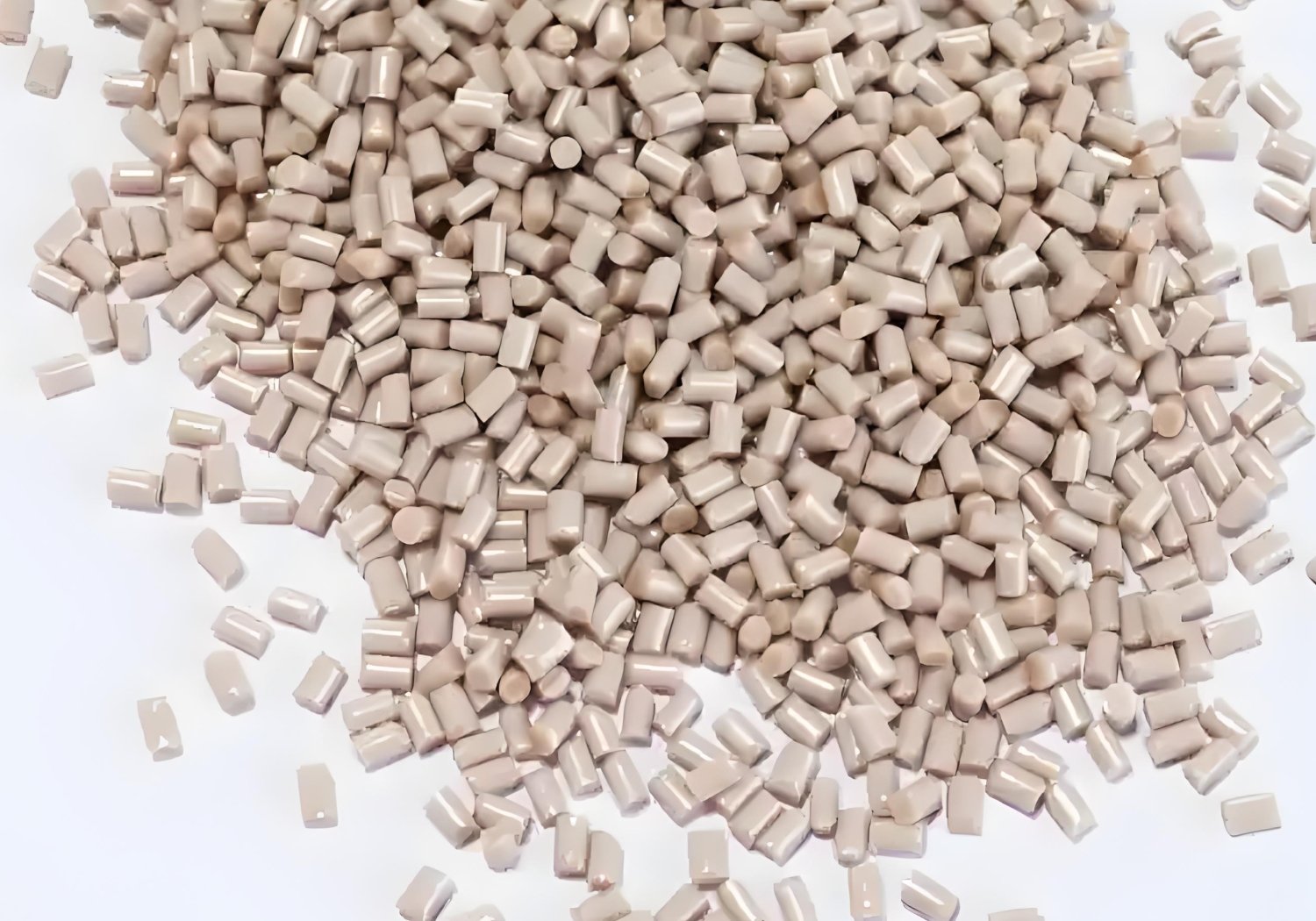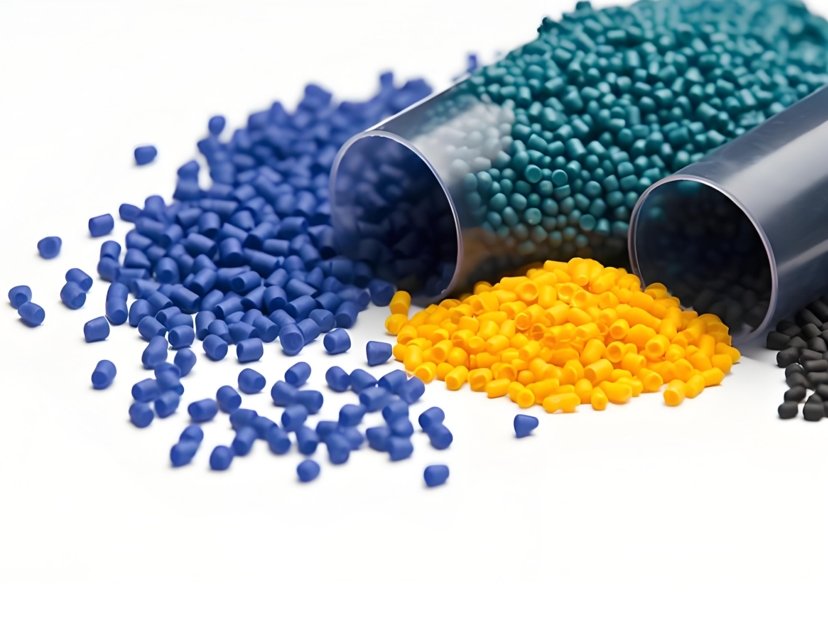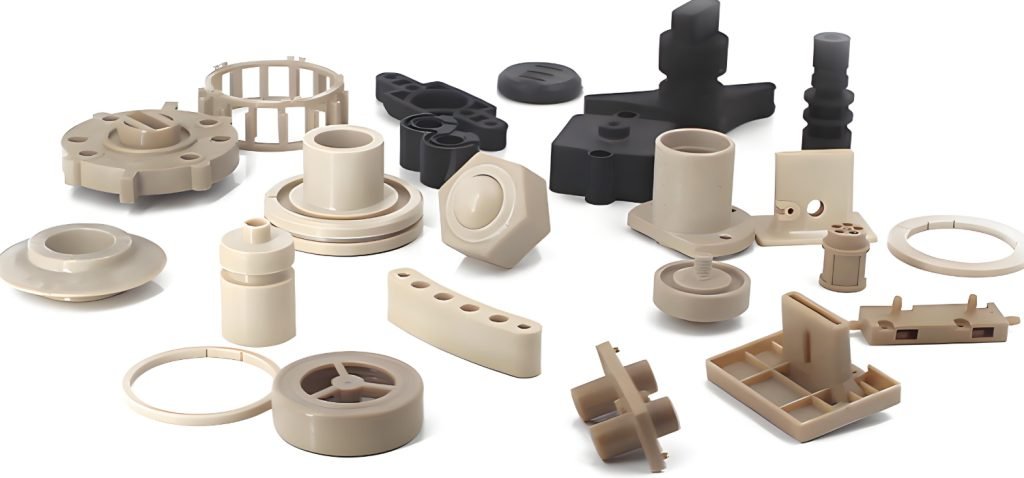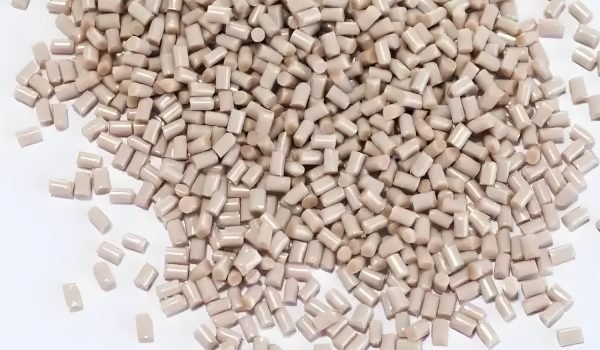Have you ever wondered how intricate, high-performance plastic components are made? The answer lies in the dynamic integration of PEEK and injection molding. PEEK, an engineering thermoplastic, is highly sought after for its exceptional properties. Injection molding, a versatile manufacturing technique, allows for the creation of complex parts.
This powerful duo offers a solution for demanding applications. Let’s learn more about it: What is PEEK? Can PEEK be injection molded? What are the long-term benefits that make it a game changer?
What is PEEK?
PEEK (polyetheretherketone) is a high-performance engineering thermoplastic known for its remarkable mechanical strength, chemical resistance, and thermal stability. It is a semi-crystalline polymer that thrives in extreme conditions, tolerating high pressures and harsh chemicals. Its melting point is almost 343°C.
PEEK’s unique molecular structure and strength make it essential to diverse fields. It endures intense heat in aerospace, provides biocompatibility in medical implants, and resists corrosive substances in oil and gas.
It can be modified with fillers like glass fiber or carbon fiber, which increases its strength and rigidity. Think of PEEK as a material designed for demanding applications where ordinary plastics would fail.

Understanding PEEK Injection Molding
PEEK injection molding is a specialized technique used to produce high-quality thermoplastic parts from PEEK resin. The process involves melting PEEK resin pellets and injecting the molten material into a mold cavity at high pressure. The mold is then cooled, and the hardened piece is released.
While this may be a challenging process, it enables the full utilization of PEEK’s superior properties. Injection molding produces defect-free parts ideal for applications that need exceptional strength and resistance.
Important Factors to Consider Before Peek Injection Molding
To fully utilize PEEK’s benefits, every detail of the injection molding process must be controlled and optimized. Here are some key factors to consider that ensure both process stability and the production of high-quality components:
1. Choosing High-Quality PEEK Raw Material
The first and most crucial step is to choose the right raw material. While PEEK inherently offers superior properties, it is best to choose the purest form. Carbon-filled PEEK is often preferred due to its enhanced mechanical strength. With a Tensile Strength (UTS) reaching 138 MPa, it surpasses regular PEEK by up to 35% and even exceeds the strength of some aluminum alloys.
2. PEEK Injection Mold Design
The design of the PEEK injection mold should be carefully considered to prevent defects like warpage and flashing. Aim for a wall thickness of 1.0 to 3 mm. Use curves at 25% of the wall thickness to avoid sharp edges. The ideal draft angle should be between 0.5° and 2° to facilitate easy part ejection.
3. Maintain Cleanliness
PEEK processing demands a pristine environment. This high performance polymer is intolerant to any foreign substance, especially those leftover from processing other, less hardy materials. Peek’s processing temperatures are so intense that most other polymers would degrade, leaving unwanted residue that can compromise PEEK’s exceptional properties.
4. Temperature Control
PEEK has a high processing temperature between (370–400 °C) to melt and flow properly. Overheating or underheating can severely compromise part quality. To avoid this, carefully maintain and control the temperature throughout the injection molding process.

How is Peek Injection Molded: Step-By-step Process
PEEK injection molding involves different steps requiring careful planning and attention to detail. Here is the step-by-step process:
1. Material Preparation
After you’ve sourced high-quality PEEK raw material, the crucial step is to prepare it for the injection molding process. PEEK is particularly sensitive to moisture; any absorbed water can lead to defects in the final product. The PEEK pellets should be dried in an oven for 2–3 hours at 150-160 °C. The drying process removes all moisture and prevents issues like bubbles during molding.
Next, it is crucial to guarantee the cleanliness of the injection molding machine itself. Specifically, the molding machine barrel needs to be thoroughly cleaned. Remove any residual materials from the barrel before starting a new molding cycle.
2. Mold Preparation
Mold preparation means readying the mold for PEEK injection. Check that the mold’s cavities and surfaces are clean and free from debris and leftover release agents. All mold components must be correctly assembled and securely installed in the injection molding machine.
3. Mold Temperature and Injection Speed
The mold requires precise temperature control that exceeds the melting point of PEEK (340°C). Meanwhile, high pressure (usually between 1500 and 2000 bar) ensures that PEEK fully fills the mold, including the detailed and intricate design.
4. Injection Molding Process
Once Everything is prepared and the machine settings are verified, the injection molding process can begin:
- Melting: PEEK pellets are heated until they become molten within the machine’s barrel.
- Injection: Once the molten peak reaches the required temperature, it is injected into the mold cavity. This high-pressure injection evenly distributes the material and fills the intricate details of the module.
- Holding Pressure: This sustained pressure compensates for the shrinkage that occurs as the PEEK cools and solidifies.
- Cooling: The cooling process solidifies the part or component and allows it to maintain its shape upon ejection.
- Ejection: Once the PEEK part has sufficiently cooled and solidifies, the mold opens, and the part is ejected.
5. Post-Processing
Post-processing involves inspecting the molded PEEK part for defects, trimming excess material, and potentially machining it to precise dimensions. Sometimes, heat treatment or surface finishing is also applied to enhance the part’s properties.
Application of Peek Injection Molding
Injection-molded PEEK components are extensively used across different industries due to their strength and unique properties. Here are some major industries where PEEK plastics can be applied:
1. Aerospace
PEEK’s lightweight nature and high-temperature resistance make it a go-to material for the aerospace industry. It’s used in critical aircraft components like brackets, clips, and interior parts. It can replace heavy materials, withstand extreme conditions, and improve fuel efficiency.
2. Medical
PEEK resins are favored in medicine due to their inertness and resistance to solvents and hydrolysis, even at high temperatures. This chemical stability makes them highly beneficial for biomedical and dental implants. PEEK’s biocompatibility ensures it won’t react adversely with bodily fluids or tissues, making it a safe material for long-term medical applications.
3. Automotive
The automotive industry currently accounts for 40% of the global PEEK resin consumption. It is used in different components like electrical connectors, sensors, and bearings. These components can withstand the rigorous conditions found in vehicles, maintaining long-term reliability and performance under harsh environments.
4. Oil and Gas
The oil and gas industry relies on PEEK for its resilience in extreme environments. PEEK is chosen for critical components like drilling tools and seals, where high temperatures and corrosives are common. Since PEEK can maintain its integrity under these harsh conditions, it can support the safety and efficiency of operations, minimizing downtime.
Benefits of PEEK Injection Molding
There are numerous reasons why PEEK is the best thermoplastic for injection molding. Let’s take a look at its key benefits:

1. High-Temperature Resistance
PEEK injection molded parts excel in high temperature and corrosive environments. They maintain their integrity, resisting degradation that would compromise other materials. This resilience extends the lifespan of components and reduces maintenance costs.
2. Biocompatibility
PEEK’s biocompatibility allows it to integrate safely with human tissue, making it ideal for medical implants. Its use can sometimes accelerate patient recovery. PEEK injection molding produces strong, biocompatible medical device components that are both durable and safe within the body.
3. Electrical Insulation
PEEK is considered an excellent insulator, both electrically and thermally. Injection-molded PEEK parts act as reliable barriers, preventing electrical current leakage and safeguarding delicate components.
Challenges of PEEK Injection Molding
Like any manufacturing technique, PEEK injection molding comes with specific challenges that require careful evaluation:
1. High Processing Temperature
PEEK injection molding requires exceptionally high processing temperatures. This necessitates specialized, high-temperature-resistant equipment, which increases initial investment and operational energy costs.
2. Tool Wear
The abrasive nature of PEEK can accelerate wear on injection molding tools. This requires hardened tool steels or specialized coatings, leading to higher tooling costs and more frequent maintenance.
3. Cost Considerations
PEEK resin itself is a high-cost material as compared to other thermoplastics. Additionally, the specialized equipment, tooling, and precise process control can contribute to overall high production costs. These factors must be carefully weighed against the material’s superior performance benefits.
Achieve Superior Performance: Choose PEEK Injection Molding
So, can PEEK be injection molded? Absolutely!
PEEK injection molding is a game-changer, delivering high-performance components across demanding industries. Its remarkable strength, heat resistance, and chemical stability make it ideal for long-lasting applications.
While challenges like high temperatures and costs exist, careful planning and a skilled manufacturing partner are crucial.
Choose a reliable partner (Write the business name here) with advanced solutions tailored to your specific needs, maximizing PEEK’s potential and driving innovation.




